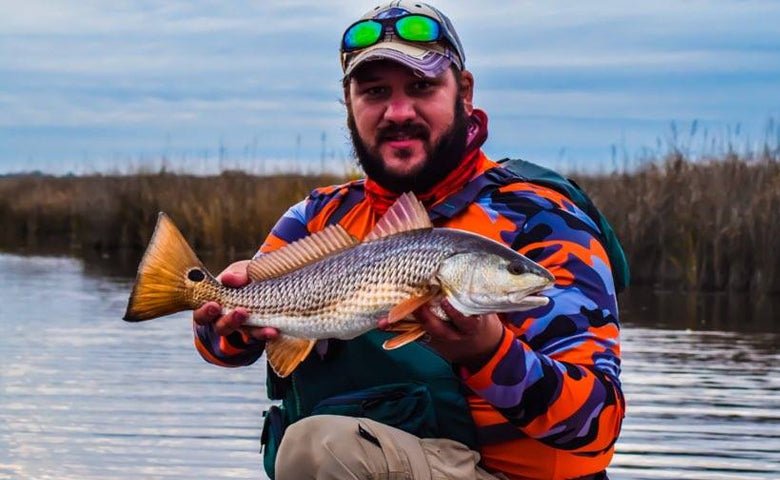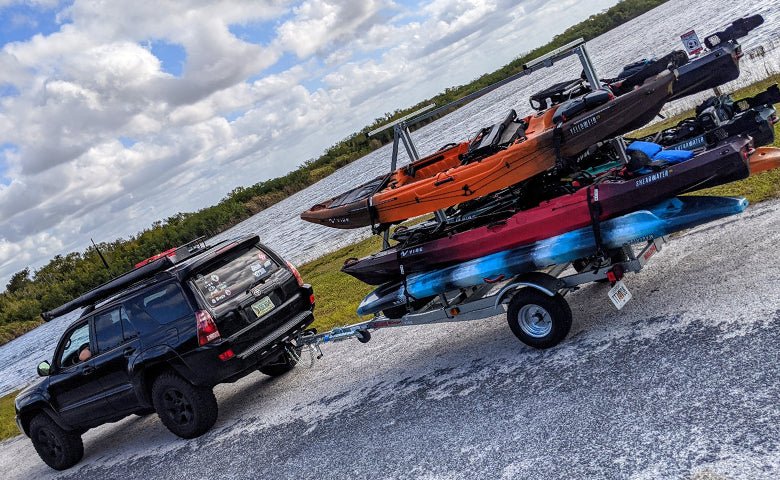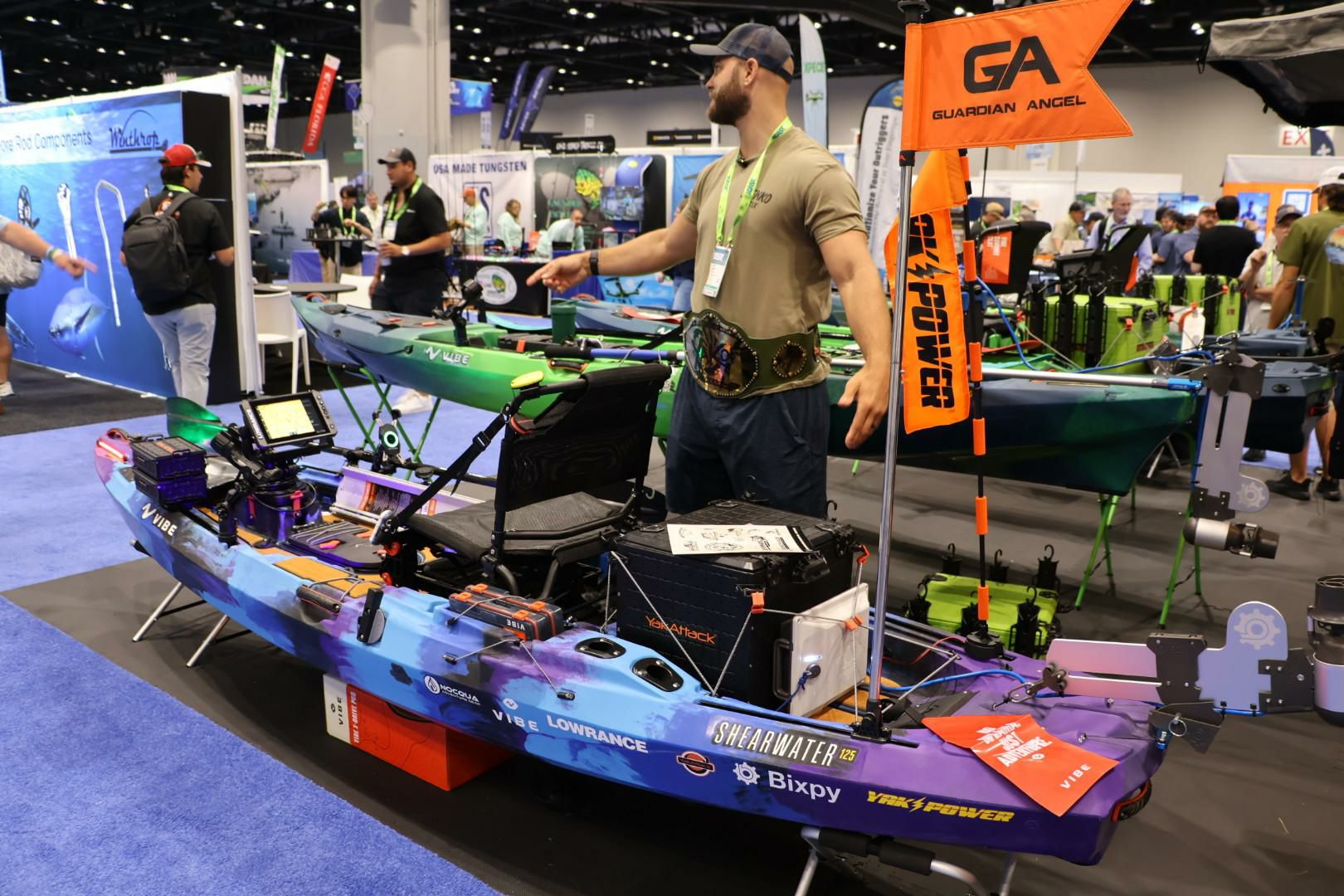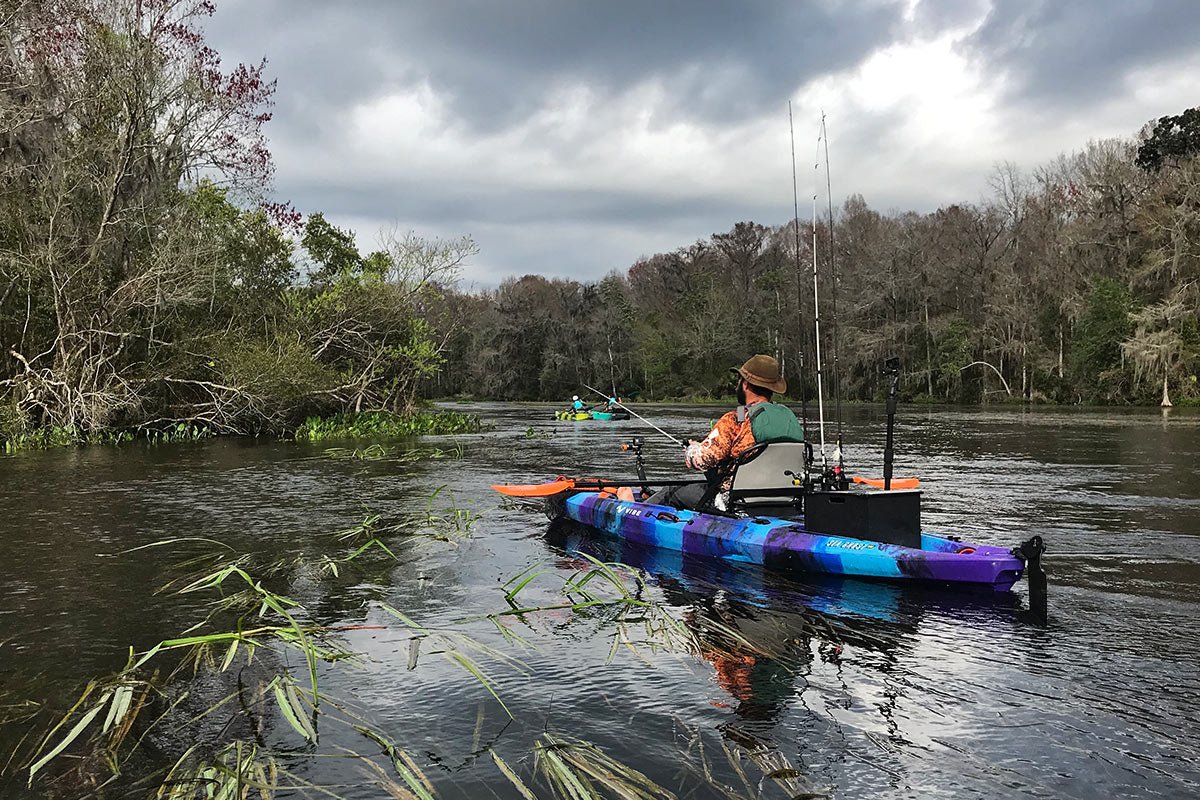How to Kayak Fish for Redfish: the Basics

There’s something truly amazing about being lost in a maze of marsh grass, casting at the faintest sign of life; when out of nowhere several shrimp break the surface, followed by an eruption of water underneath them. Welcome to the world of redfish. They’re aggressive bullies that don’t mind putting your tackle through an abusive test to prove it’s mettle. Hopefully by the end of this article, you will be prepared for the basics of taming this pumpkin colored, spot-tailed beast.
Where To Find Reds
Generally speaking, red drum or more commonly redfish will be wherever their food source is. But....what are they eating on what day? The good news, they aren’t picky. They will literally eat anything, from shrimp to crabs, and baby nutria rats to full grown mullet. The list is endless, if it will fit in their mouth, they will try to eat it. So instead of focusing on finding the redfish themselves, find the bait and there’s a good chance you’ll find the redfish.
Gear: There’s a few different ways to target redfish, or more specifically target the different ways they feed. For the purpose of this article we will divide gear into two different categories. Structure fishing, which targets redfish that are ambush feeding; and sight fishing, which targets the fish that are foraging for food.
Rod/Reel for Structure: Like I mentioned earlier, redfish are bullies and will absolutely test your tackle to its limits. Use gear heavy enough to handle the toughest structure you expect to fish. Remember, saltwater structure typically is covered in sharp barnacles and oyster shells, so reels with lots of stopping power (drag) spooled with 20-30 pound monofilament line are your best bet. The rod also needs to have enough power to turn a redfish out of structure. A medium/heavy or heavy rod should fit the bill.
Rod/Reel for Sight-Fishing: Since redfish typically forage on flats, there’s not a lot of structure to worry about. Instead focus on finesse presentation since you’ll want to land a lure near their head. Lighter gear with 10 lb braided line will suffice. It’s a good idea to tie a leader onto your mainline, 15 lb flourocarbon works great. Medium to medium/heavy rods will have plenty of power to keep a red under tension. Since they can’t run deep on a flat, reds will run long distances, so line capacity is more important than strong drag. (unless you don’t enjoy amazing fish fights)
Lures: This part is simple. Any type of baitfish, shrimp, or crab imitation can wreak havoc on unsuspecting redfish. A staple along the gulf coast is the Gulp! Alive swimming mullet in chartreuse color. Rig it on an appropriate jighead for the depth you are fishing. (1/16th-1/8th oz for shallow water, 1/4th-3/4th oz for deeper water) If you choose not to use a scented plastic, add scent like ProCure, to help entice strikes.
Rigging: Depending on where you’re targeting redfish, you’ll need to rig your lures differently to help put the odds in your favor. We will only show three highly effective methods in this guide.
Jig: This is hands down the most popular way to rig a lure to catch redfish. Start by measuring where the hook point should exit the back of the plastic, then insert the hook point into the center of the head. Continue pushing the plastic onto the hook until you get to the exit point. Be sure to bring the hook point out of the very center of the lure so that it will run straight. Take your time. This is a very important step.

Popping Cork Rig: Another popular rig, the popping cork, is deadly on redfish. With its loud noise, it can draw fish in from 30 yards away. When you add scent, the effectiveness increases dramatically. Start by tying your mainline to the top of the cork. (Unweighted side) Then tie a length of flourocarbon leader to the bottom. The length you choose should between 18”-30” depending on depth of water. Next add a jighead and plastic using the same method as explained above. Popping cork rigs are clunky to cast, spinning gear definitely excels when propelling this rig through the air.

Weightless Plastic: Primarily used for redfish feeding on flats, a weightless plastic enters the water silently, and the depth can be controlled by just letting it sink. For your best chance at getting a red boat side, choose a strong Texas-rig worm hook. Start the hook point into the head of the plastic lure about a half inch, then exit the hook through the bottom. Push the body of the lure all the way up the hook, then rotate the lure 180 degrees and re-insert the hook through the body of the lure.

Techniques: Each of the aforementioned rigs have different ways to retrieve them, but mainly try to imitate a natural bait.
Jig: This is a simple “chuck and wind” lure. Cast it out, let it sink to the desired depth, then just start reeling it in. Let the plastic do the work. Paddle tail lures have a very fishy action. Another variation is to let it hit the bottom and “hop” the lure in by retrieving a few turns, then lifting the rod tip with a sharp twitch. This imitates minnows feeding on microorganisms in the bottom of the water column.
Popping Cork: Again, this one is simple, and the lures will do most of the work. Cast it out, give the rod a hard twitch to “pop” the cork. This imitates fish feeding near the surface. You can be loud with this technique, it’s literally a fish call. Always let the plastic settle for 10-20 seconds after popping. Once a fish takes the cork under, reel in slack and set the hook really hard. Your not just setting the hook onto a fish, your also fighting against the resistance of the cork.
Weightless This is by far one of the more technical methods in this guide. Instead of blindly casting, a weightless rig works best of you sight cast to a redfish. When you’re on the flats, look for dark (or bright orange) shapes swimming around. Before casting, observe them for a moment and determine where they are heading. Cast well ahead of the fish and slowly work the rig so that it intersects the fish’s path right in front of the fish. A bright or white color lure helps with this technique.
With all new ventures, there will be learning curves. One important thing to remember, never give up on redfish. I’ve seen bites go from none in several hours, to limiting out in a matter of minutes, at the snap of a finger. Tides can change, weather can change, and fish can be piled up only a few hundred yards away from what seems like a deserted water system.
Keep casting, keep scanning the horizon. The next cast could be the one that starts peeling drag.
No Drama. Just Adventure.
Written and photos by: Jeff Jones



